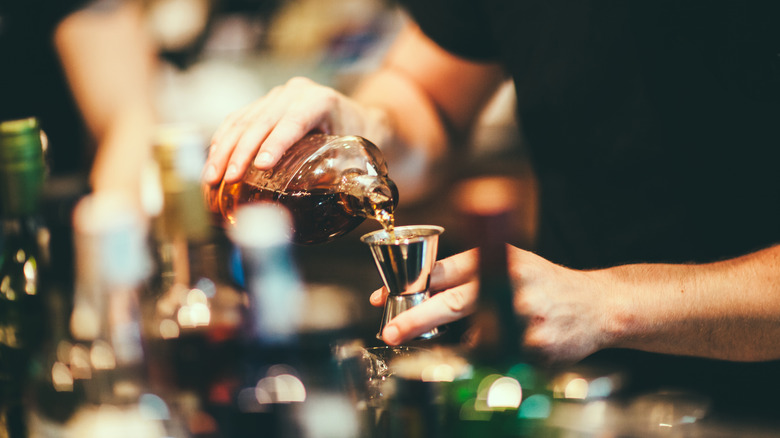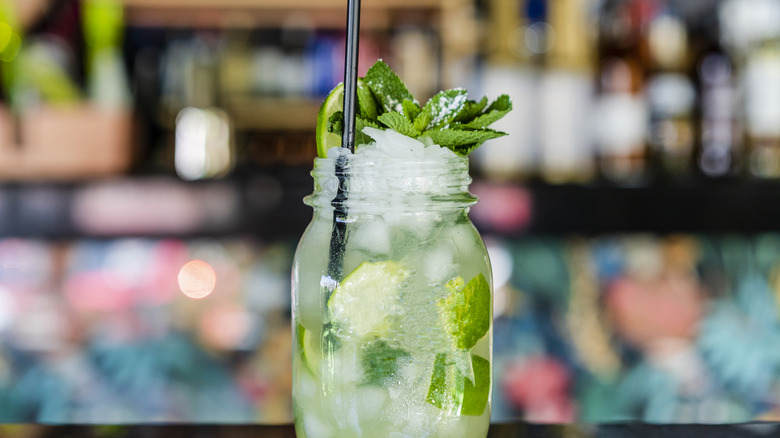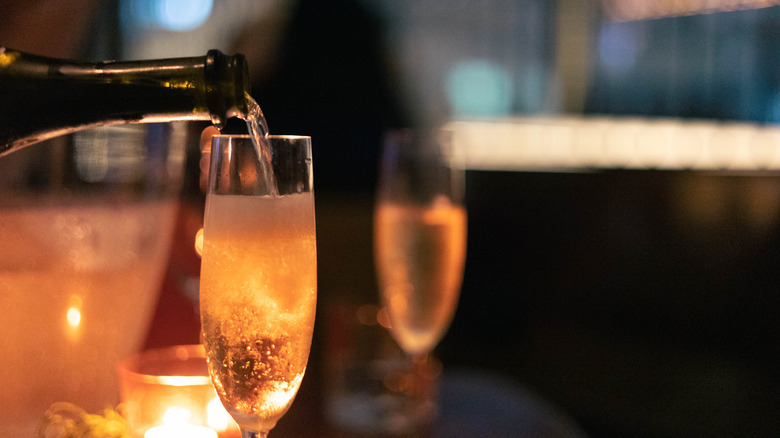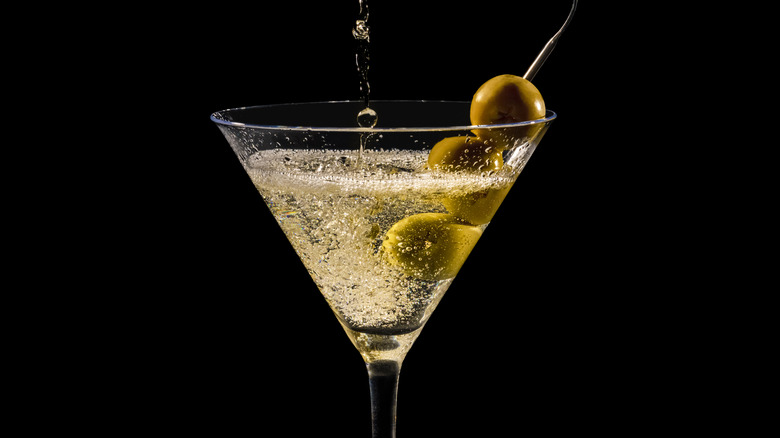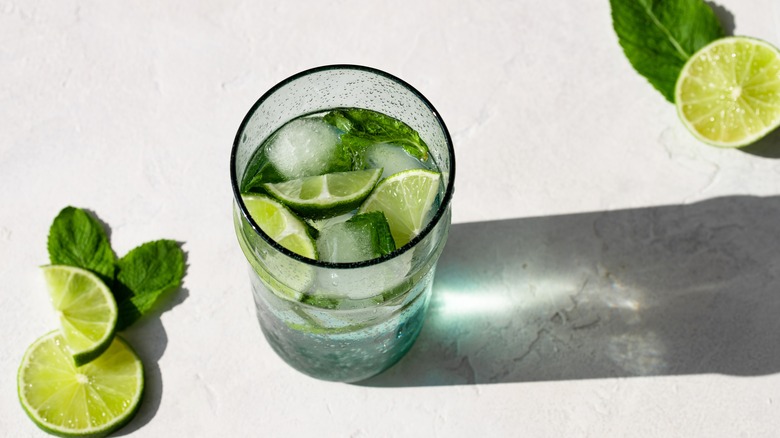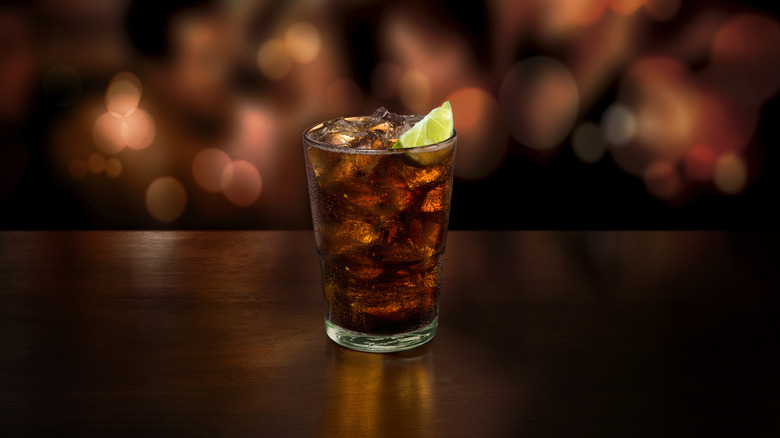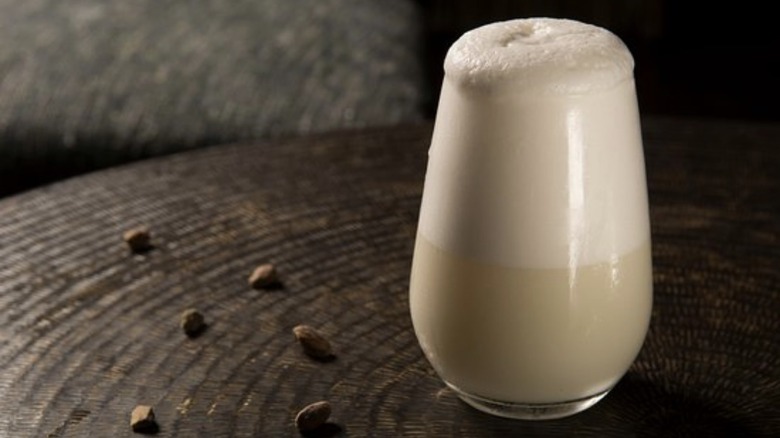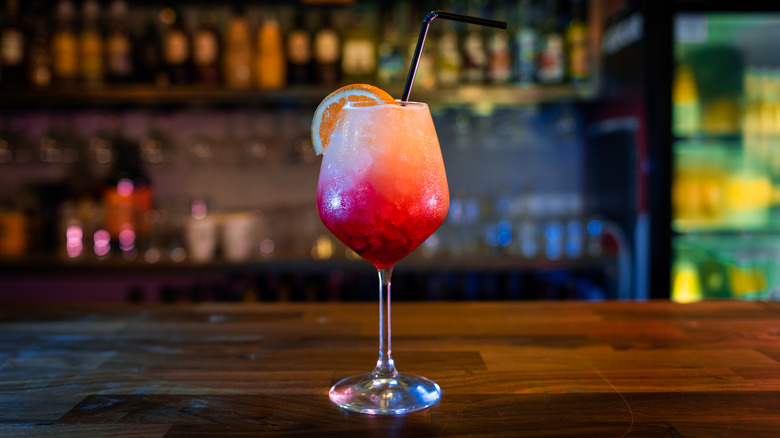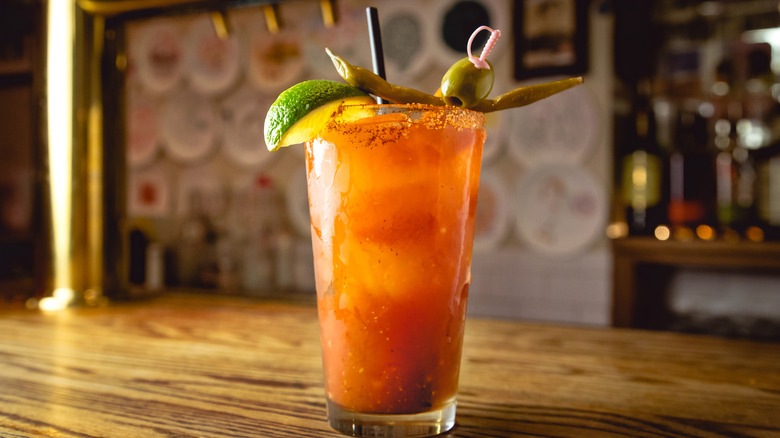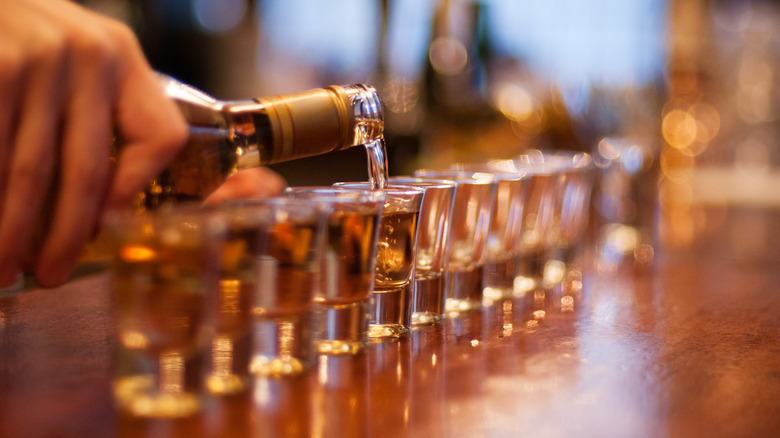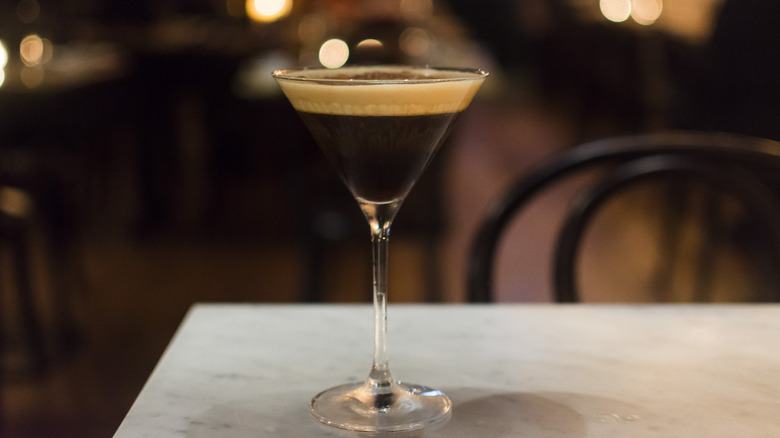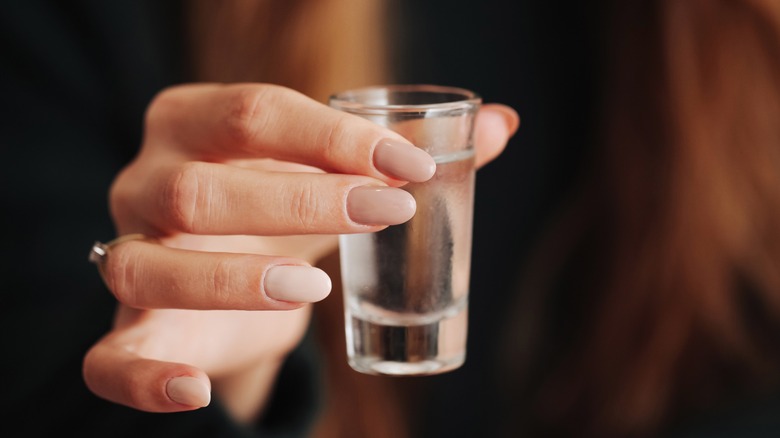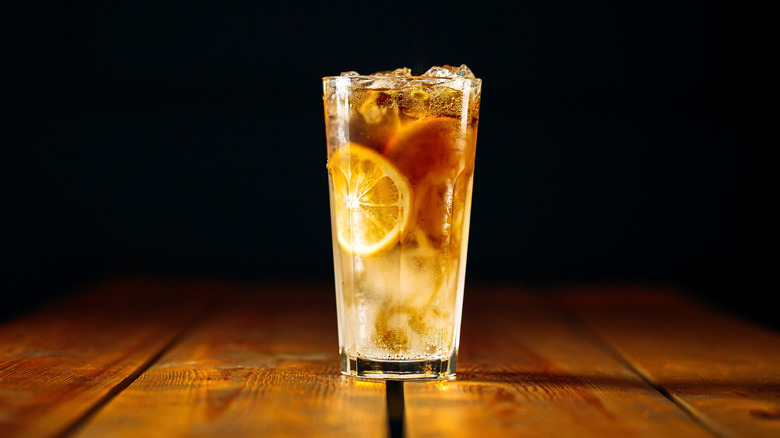Bartenders Chime In On 12 Drink Orders That Ring Alarm Bells
The average American adult consumed just under three gallons of alcohol in the entirety of 2021, according to the National Institute on Alcohol Abuse and Alcoholism.More people are turning to alcohol to make their nights a little more fun by heading to bars, restaurants, and clubs. In fact, sales in bars and nightclubs totaled more than $247 billion in 2021. One question you might have is: What are people drinking when they go out, and what are the bartenders' reactions?
It's barely a secret that bartenders are almost always judging patrons based on their drink orders. TikTokers have created humorous skits based on real-life customer interactions — and some even suggest there is a "bar code" to live by if you're going out for the night. It must be true, then, that there are some drink orders that raise red flags in your bartender's eyes.
I spoke to Marisol Delarosa, managing partner of the Brass Monkey, Daniel Meursing, CEO and founder of Premier Staff, Eric Trueheart of Black Yeti Beverage, and Maya Falmagne of Osteria Morini, 2A, and Morimoto. These experts gave me the inside scoop on what drinks are eyebrow raising for bartenders. Read on to find out what your drink order might say to your bartender about you — and why it might ring some alarm bells.
Mojitos
Mojitos have been popular since the 1800s, when many tourists were making their way to Cuba and rightfully enjoying the cocktail throughout their travels. Its popularity has stuck in the 2020s, and it is even known as the number one drink in Arkansas. Unfortunately, the popularity of a mojito extends only to the customers ordering them, not to the bartenders forced to make them.
Daniel Meursing, CEO and founder of Premier Staff, says his bartenders "still shudder at the memory" of a particular service where mojitos became the drink of the night. Made with cane sugar, rum, lime, club soda, and — most nightmarishly for bartenders — muddled mint, a mojito is a hassle of a drink for a bartender to make during a busy period. Having to muddle mint for one drink takes more than the average time a bartender has to spend on one customer.
Managing Partner of Brass Monkey in New York City Marisol Delarosa notes that making one or two isn't necessarily a problem, but the real issue is, "With attractive drinks like that, people will see it and want one and the next thing you know, you're just a mojito machine for the next several hours." To avoid this kind of situation, Delarosa has seen bartenders lie about not having fresh mint to force patrons to order simpler drinks.
Death in the Afternoon
Any fans of Ernest Hemingway in the room? This cocktail is rumored to be invented by Hemingway, according to Daniel Meursing of Premier Staff, which would make sense if the cocktail is thought to be a namesake of Hemingway's book of the same title. Regardless of the origins of the Death in the Afternoon, the cocktail's name tells you just how dicey it can get when this drink is ordered at a bar.
During a literary-themed party that Meursing hosted, many attendees ordered a Death in the Afternoon, which consists of absinthe and champagne. This is potentially where the "death" part comes in — absinthe is considered an overproof liquor, which means its alcohol by volume is over 50%. Combined with the champagne, which typically has an ABV of 12%, this drink is just pure alcohol with nothing to cut it.
For Meursing, this means that any party where this drink is ordered frequently is bound to take a disastrous turn. At one such event, Meursing had a bartender note, "When people start ordering these, I know we're in for a wild night. It's like watching a car crash in slow motion — you know it's not going to end well, but you can't look away." While the Hemingway concoction may seem sophisticated, the result of drinking Death in the Afternoon makes most bartenders dread any patrons ordering it.
A Very Specific Martini
Learning how to order a martini is a rite of passage for most people who drink, because you have many options of how to enjoy one. What you should know about a martini is what your choices are: Choose from gin or vodka, straight, dirty, or with a twist — or maybe a lychee martini, for good measure, or even an espresso martini, perhaps? Besides these flavored options, bar staff tend to struggle to deal with people who make very particular martini orders.
While hosting a Netflix premier, Daniel Meursing, CEO and founder of Premier Staff, encountered a celebrity who ordered a martini with what he called "a laundry list of specifications." The customer ordered exactly three and a half olives for their drink, just a "whisper of vermouth," and even requested that the martini be stirred counterclockwise. Such a request is too much to ask of a bartender trying to serve multiple people at once — and because martinis are already made so specifically to order, wanting an extra-specific version tends to inconvenience the bar staff.
A Confusing Virgin Cocktail
Virgin cocktails can be great alternatives for people who don't drink or can't drink, but still want to feel included during a social outing, or just like the taste of a certain cocktail. There are many non-alcoholic wines and beers to be ordered at bars,so finding a non-alcoholic drink is easy. A virgin cocktail can be difficult, however, and Daniel Meursing of Premier Staff notes that sometimes, people don't understand how to order them.
For example, Meursing had an event guest ask for a "virgin gin and tonic," which, if you remove the alcohol from the recipe, just leaves tonic water, which is not alcoholic. In this sort of a situation, the bartender is forced to consider what exactly the guest is asking for and interpret it on their own. This would be the same as ordering a virgin rum and coke, which would really just be a soda — so you get the picture.
As an alternative, you can order a non-alcoholic version of a drink that would be a bit more complex in flavor than just ordering tonic water. Maybe a play on a virgin margarita, like this watermelon mint margarita mocktail, which consists of watermelon, mint, sugar, water, lime, and non-alcoholic tequila. This type of virgin cocktail emulates the complexity and taste profile of the alcoholic drink it embodies without leaving the bartender to wonder what it is you want.
A Rum and Coke with rum on the side
Marisol Delarosa, managing partner at Brass Monkey, emphasizes trusting your bartender when you're ordering a drink like a rum and coke. At her bar, a rum and coke gets 2 ounces of rum and is topped off with the coke from there. In an attempt to get more liquor out of the drink, though, Delarosa once had a customer order a coke with a shot of rum on the side. Looking proudly toward his friend, the patron said something like, "See, I figured them out."
Delarosa explains, "What he failed to grasp was in not trusting the bar staff, he was actually getting less for his money because our shot glasses are 1.5 ounces." The patron got a shot smaller than the amount of alcohol that would have gone into his drink, and he paid more for it — a rum and coke would have been $11, but he paid $10 for the shot of rum and $3 for the soda.
Delarosa believes patrons like these long for the days when their drinks were free poured, but now, more bartenders are measuring their pours. Drinks taste good because they have a specific recipe, and that taste can only be achieved by properly measuring that recipe. As customers, we have to trust that our bartenders only have our best interests at heart, and not try to get more alcohol by ordering our two-ingredient drinks separately — or by ordering "less ice" or a "taller glass."
A Ramos Gin Fizz
A Ramos Gin Fizz is a cocktail that should not be ordered at every bar, especially if it is a busy time. Eric Trueheart, co-founder of Black Yeti Beverage, says it's likely to annoy a bartender. This potential frustration with the bartender comes from the complicated nature of a Ramos Gin Fizz — its ingredients are gin, simple syrup, heavy cream, lemon and lime juice, orange flower water, egg white, and club soda. Some of these are not your typical behind-the-bar ingredients, and throwing the bartender off with this order could overwhelm them during a busy period.
Also, a Ramos Gin Fizz has an original recipe that calls for it to be shaken for anywhere from 12 to 15 minutes, which Trueheart says is just not doable for most bartenders. "In fact, the probably adequate 45 seconds is pushing it — at a busy bar, that is going to drive everybody crazy." This goes for most complicated cocktails, too.
Trueheart makes a point to note that if a Ramos Gin Fizz is not on the menu, you shouldn't order it — if it is on the menu, you should try ordering it, because the establishment is probably proud to make it. Most of the time, this is a New Orleans favorite drink, says Trueheart, as it was made famous by former Louisiana Governor Huey Long.
A Sex on the Beach
You might have heard of this iconic cocktail; exactly how the drink gained its popularity is relatively unknown — some people believe its origins were in Florida, and others believe it got started in a TGI Fridays, back when that chain was popular for its mixed drinks. Regardless of why it became popular, its favor was back in the '80s, and according to Eric Trueheart of Black Yeti Beverage, the drink should stay there.
Made with vodka, peach schnapps, orange juice, cranberry juice, and crème de cassis, "a [Sex on the Beach] flags you as an unsophisticated, novice drinker," according to Trueheart. The name doesn't help with the sophistication, and because the drink is so sugary and dated, it's clear to the bartender that a patron ordering this is only there to get drunk. Trueheart says, "It's what college students drank before they invented BuzzBallz."
The Sex on the Beach isn't the only cocktail like this — according to Marisol Delarosa, the Brass Monkey, Dirty Shirleys and Green Tea shots have the same effect. Delarosa says, "To me this is just a sign of the overall movement for people to not want to taste the alcohol they are drinking." A Dirty Shirley is ginger ale, grenadine, and vodka, and Green Tea shots are whiskey, peach schnapps, sour mix, and sprite. When you order these drinks, many bartenders will see it as amateur hour.
Bloody Marys outside of brunch hours -- and also White Russians
This drink order comes down (mostly) to bar etiquette. Marisol Delarosa of the Brass Monkey brought this one up to emphasize the lack of understanding patrons often have about when and where it is appropriate to order certain drinks. It comes back to not ordering a Ramos Gin Fizz at a dive bar, for example. Bloody Marys should only really exist during brunch hours.
The cocktail is made with vodka, lemon juice, salt and pepper, horseradish, Tabasco, Worcestershire sauce, and tomato juice. The drink just sounds like something ready to be eaten, so ordering a Bloody Mary after brunch is a risky choice. With its many ingredients, it takes more than the average amount of time to prepare, and bartenders are usually only set up to take on this challenge during brunch hours. After that, the ingredients have been put away, and getting them back together for one Bloody Mary would be inconvenient.
Delarosa also brings up bar etiquette when discussing White Russians: "If you order a White Russian at any time, you probably don't have enough social awareness." Although she acknowledges this might be a personal opinion after more than two decades working in the industry in New York City, she notes that dulling an alcoholic spirit with milk or cream — as a White Russian calls for — interferes with the integrity of the spirit. Some drinks just shouldn't be ordered at certain times — or at all.
Rounds of shots -- especially the disgusting Bar Mat Shot
You're probably thinking: "Well, if I'm at a bar and I order a round of shots, what's the harm in that?" And here's the deal: While ordering shots does ring some alarm bells for bartenders, they are not the worst red flags – bartenders are just paying a little more attention. Of course, it all depends on the type of shot you request.
Marisol Delarosa, the Brass Monkey, clued me in — with the White Tea shot (not unlike the Green Tea shot which exists to get you drunk fast), you switch out whiskey for vodka. While both of these shots will definitely scream "amateur drinker" to the bartender, Delarosa tries to withhold judgment, understanding that these shots are popular for the same reason flavored seltzers are — they do well to take the edge off and taste good while doing it.
An unfortunate shot that Delarosa notes is trending right now is a "bar mat shot." "Someone will request to drink the runoff from all of the liquid that accumulates on a bar mat over the course of the night, poured from the mat into a shot glass," says Delarosa. This rather unfortunate new shot is surely going to raise some red flags for your bartender, and rightfully so. It should also be noted that many health inspectors urge drinkers never to order this shot — for obvious reasons.
The Espresso Martini and Aperol Spritz
We know them and we love them, right? The espresso martini and Aperol spritz are trending drinks for summer 2024, with the espresso martini increasing its ordering growth by 50%, and the aperol spritz being the most popular cocktail in the United States as of June 2024, according to Coffeeness via Forbes. You can barely go on social media without seeing these two drinks, and any bartender across the U.S. is probably tired of making them.
While Marisol Delarosa of the Brass Monkey thinks everyone should enjoy the drink they like, she also notes that some bartenders "think whatever is having a moment in cocktail culture is a bit of a red flag because it sort of shows that the person [ordering] isn't that original." On the contrary, she believes these trendy cocktails are signs that as a culture, we have come to agree on something, and there is beauty in that.
But not all bartenders will agree, and often, it becomes annoying for a bartender to make the same popularized drinks repeatedly. Simply put by Maya Falmagne of Osteria Morini, 2A, and Morimoto, "If you walk into a bar and order the latest thing that's cool on TikTok, the bartender will probably judge you." Alas, as a person who loves espresso martinis, I think this is an alarm bell that a lot of us patrons may just have to be okay with ringing.
Angel Shots
This drink order will always raise alarm bells for the bartender, and that is exactly what it is meant to do. An angel shot isn't actually a shot, or even a drink at all. Instead, ordering this drink at a bar signals to the bartender that you need help or feel as though you may be in danger. At a restaurant in upstate New York, I encountered an angel shot ordering guide in the stalls of the women's restroom.
At that establishment, ordering the angel shot neat meant you wanted someone to escort you to your car, ordering it with ice meant the bartender would call you a cab, and ordering it with a lime meant the police would be called. While the meanings of each order specification vary depending on the bar that you go to, many bars throughout the United States have bar staff that are aware of the concept of angel shots — or some variation of them — and are ready to assist.
Long Island Iced Tea
Ordering a Long Island Iced Tea is a rite of passage for anyone on their journey with alcohol, because Long Islands are one of the best drinks to feel alcohol — and fast. Marisol Delarosa of the Brass Monkey says, "No one is ordering a Long Island Iced Tea because they like the way it tastes." And through experience, Daniel Meursing, Premier Staff, agrees. One of Meursing's staff members notes, "When someone orders a Long Island, I start scanning for the nearest security guard."
A Long Island is made with gin, vodka, white rum, tequila, and triple sec, which totals to five alcoholic components in one cocktail. This amount of alcohol is bound to make patrons rowdy, and that is the main reason that Long Island Iced Teas sound alarm bells to bartenders. Delarosa adds, "The person [ordering] wants to black out and will probably be loud and obnoxious about getting to that state of drunkenness." Such a concoction of spirits makes it clear that the goal of Long Islands is not to be enjoyable — and that, for most bartenders, is a red flag and, well, you know, a ringing bell!
